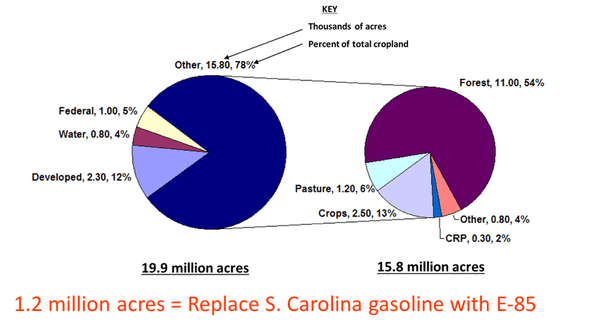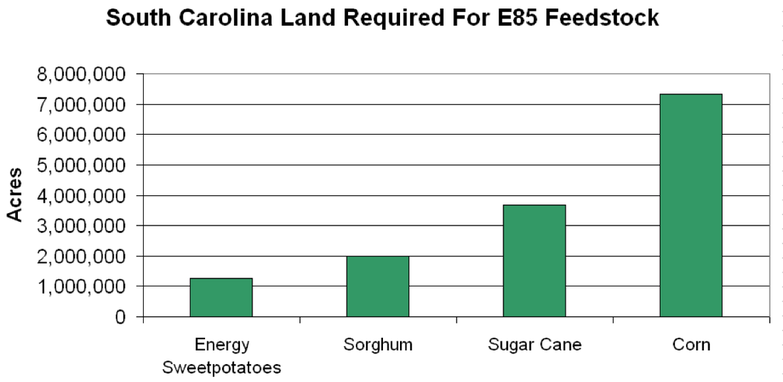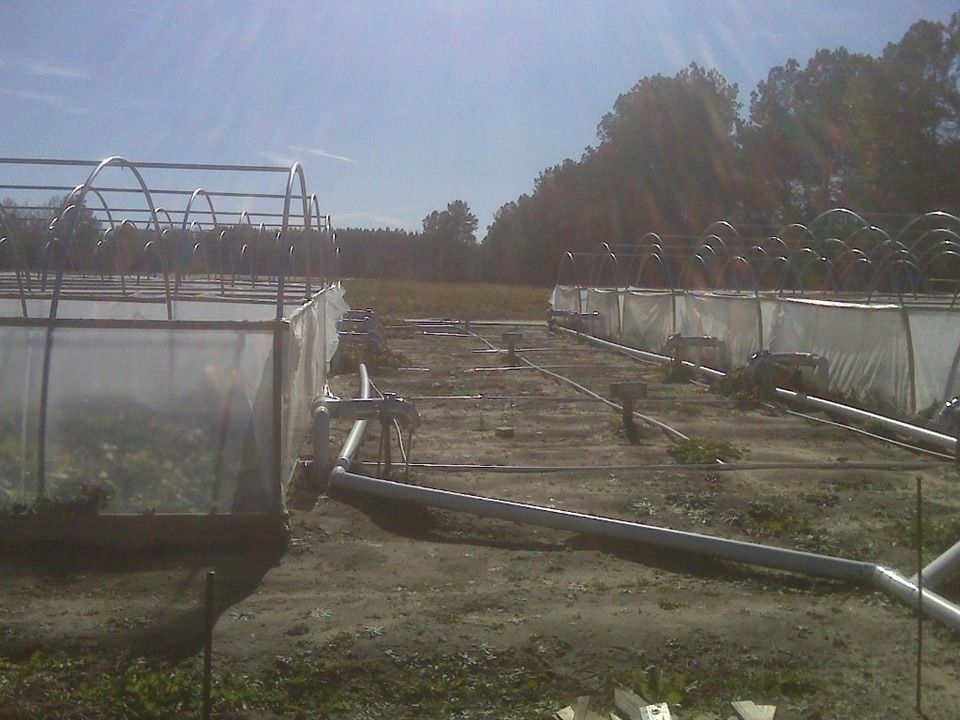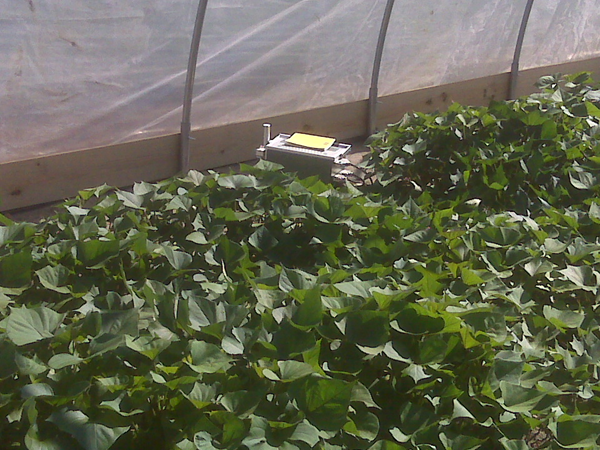What Makes eNergy Tuber an ABF
(Advanced Biofuel Feedstock)
Sustainable Green Energy Crop?
What factors are needed in a
sustainable advanced biofuel crop?
sustainable advanced biofuel crop?
Feedstock |
Nitrogen/A in lbs |
Yield in gal/A |
Pounds of N per 100 gallon |
Percentage of corn |
Corn |
210 |
400 |
52.5 |
100.0 |
Sorghum |
160 |
500 |
32.0 |
61.0 |
Energy Tuber recommended |
90 |
1800 |
5.0 |
9.5 |
Energy Tuber SC test |
45 |
1800 |
2.5 |
4.8 |
ENERGY TUBER Uses Less Land to Support 1.2 MGY Ethanol Than Other Feedstocks. Less Land means less diesel used for Tractors, less Chemicals and Water per Gallon of Ethanol Produced. |
Preliminary GHG (Green House Gas) Analysis of an Energy Tuber Dr. Richard Plevin, UC Davis |
18 to 23 g CO2e MJ-1 The initial Green House Gas (GHG) analysis was calculated by Dr. Richard Plevin, of Transportation Sustainability Research Center, UC Berkeley. The initial analysis showed the ENERGY TUBER would reduce emissions, over 75%, with a carbon footprint of about 18 to 25% of gasoline. |
Compared to 95.86 for gasoline. Could be even lower if: |
|





